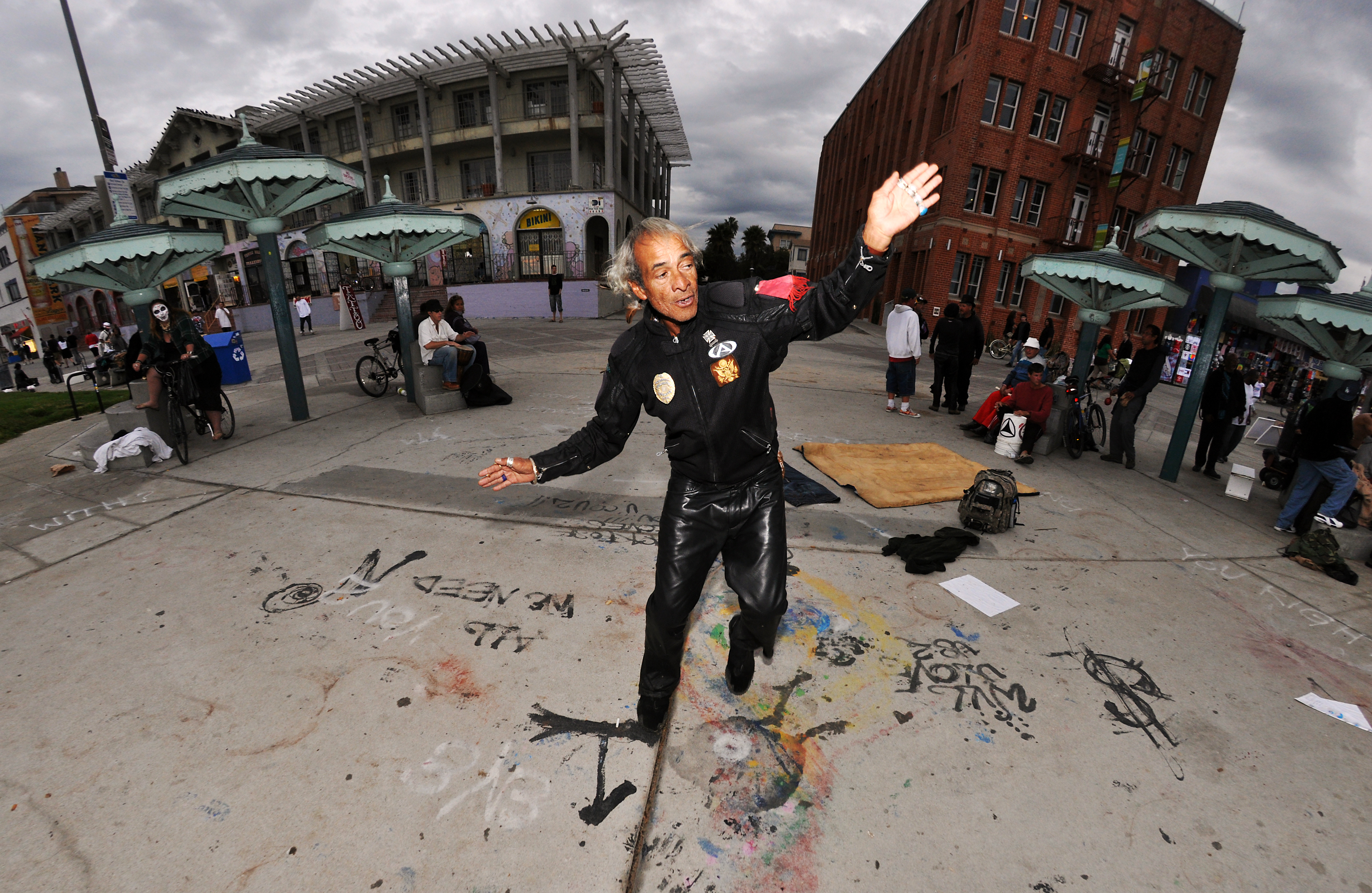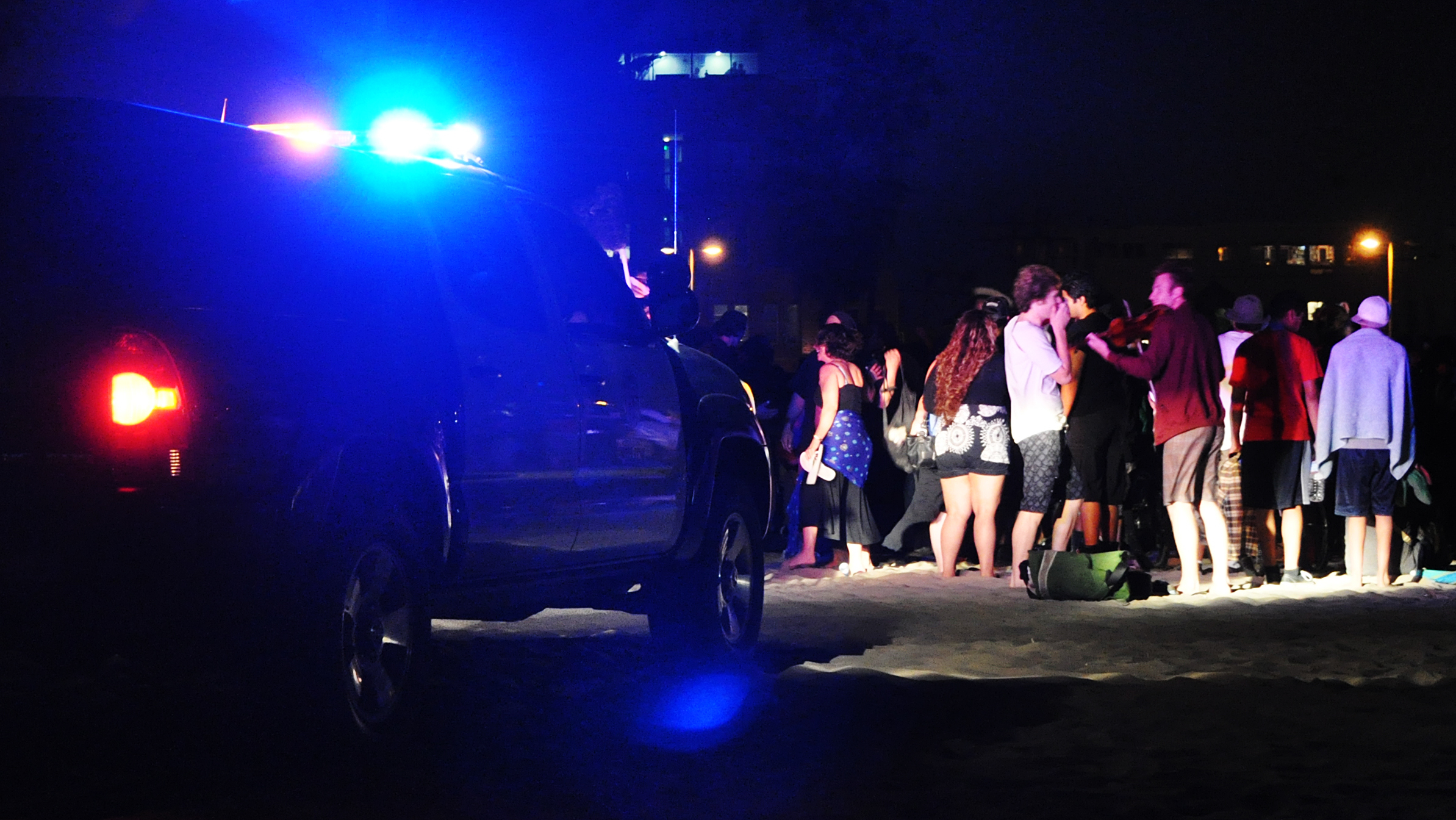
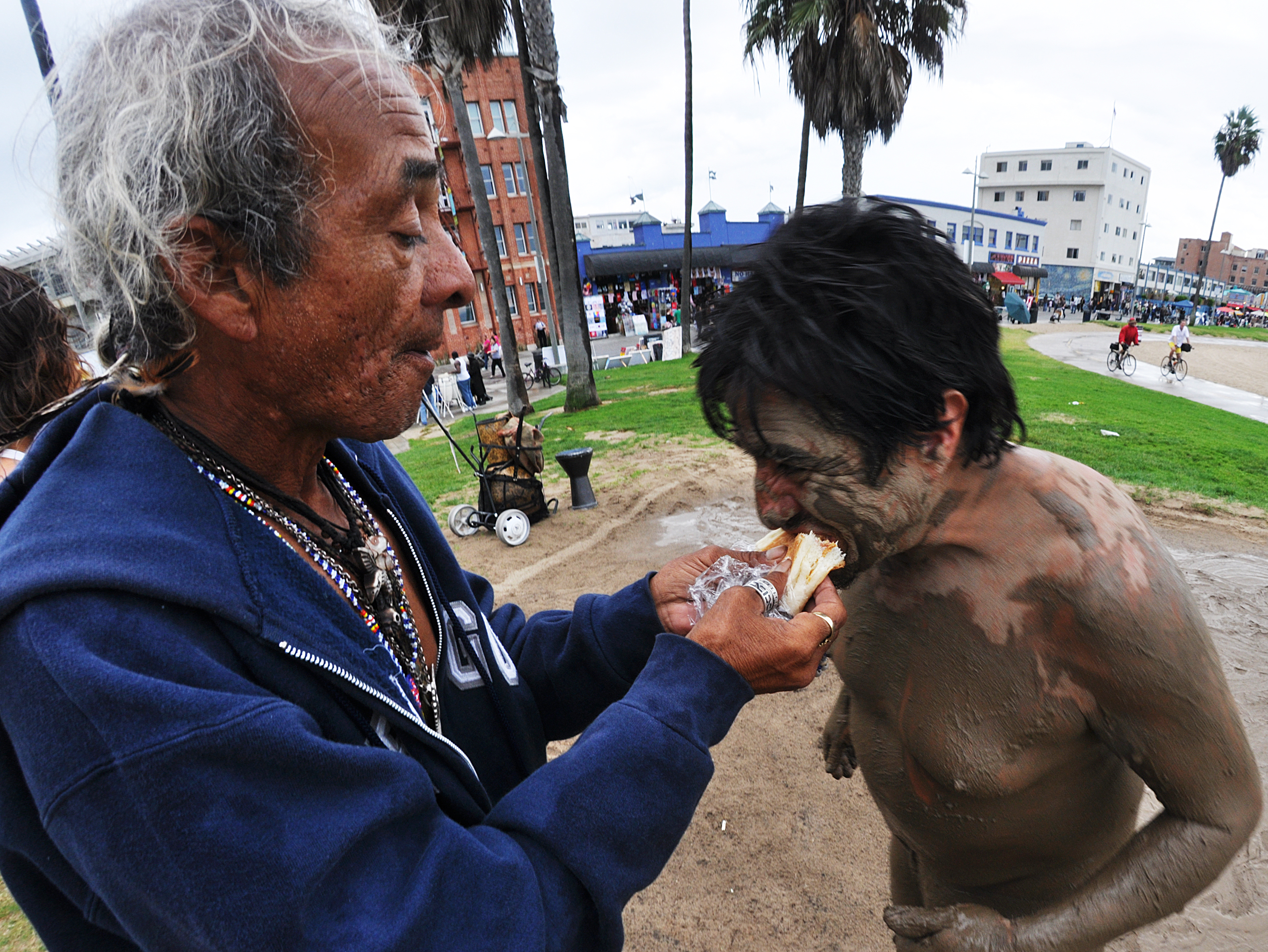
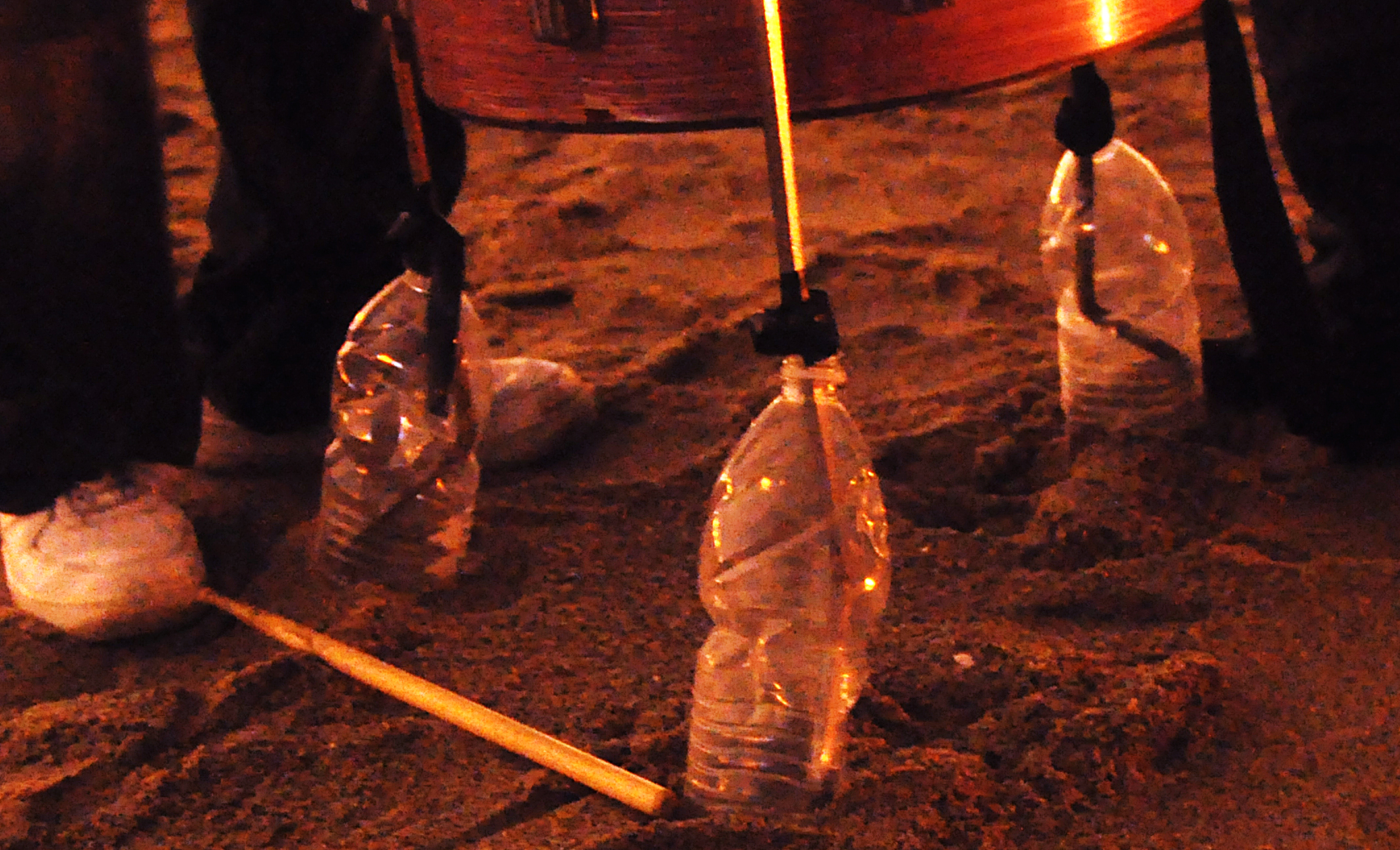
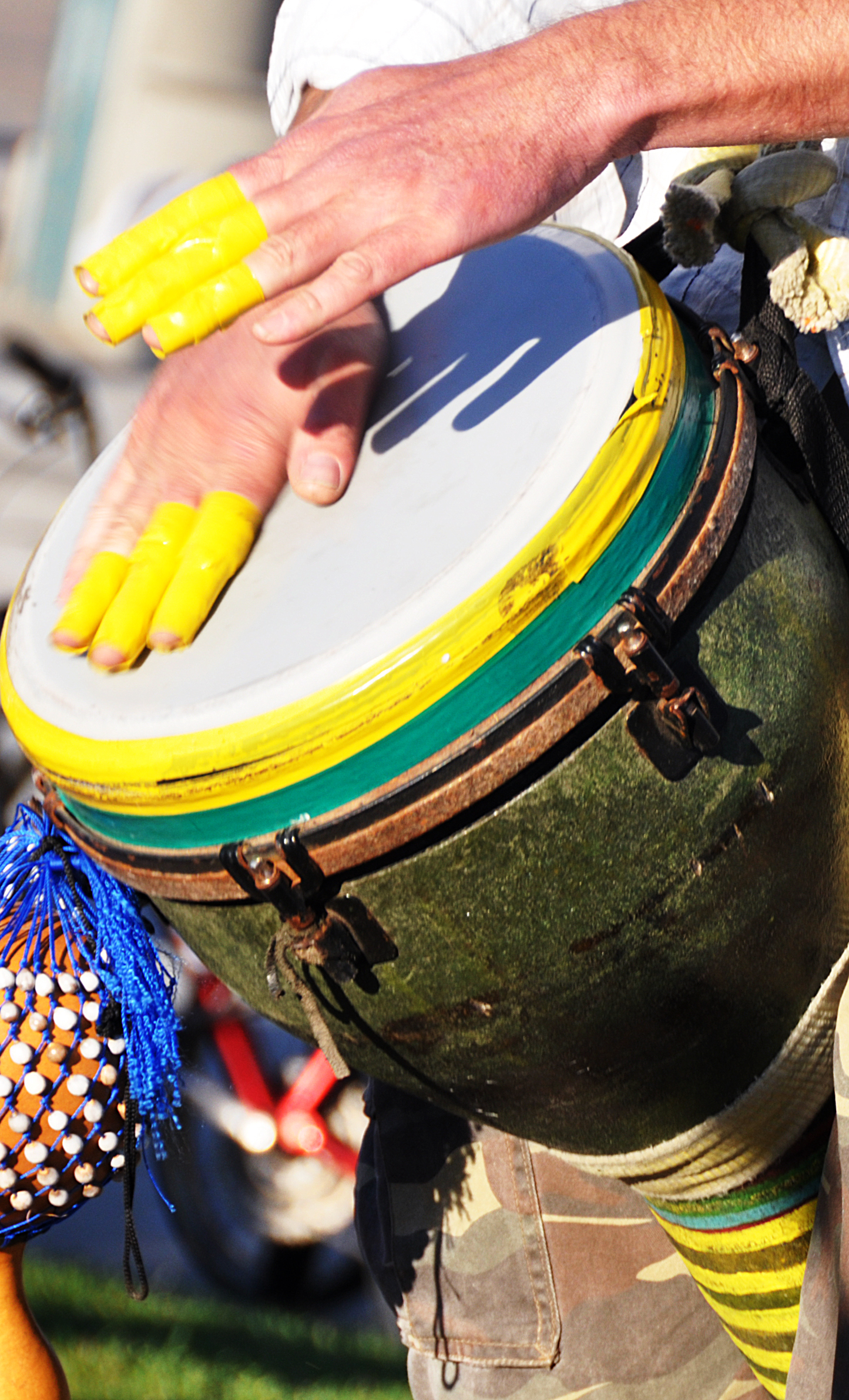
It’s 6 p.m. on a Saturday down at Venice Beach, and you can’t hear the person next to you. As the sun sets, the cacophony of the drum circle climbs to its zenith. More than a hundred drummers, dancers and onlookers crowd in a pack so dense it’s hard to see the middle.
All you can hear is the beat.
That’s what Brian Hogan, a doctorate student in ethnomusicology, hears every weekend from his house several blocks away in the Venice suburbs.
“There’s this incredible, visceral quality to how much sound is produced,” he said. “If you can hear it from my place, that’s loud.”
The sound of drums at Venice Beach has become as consistent as the tide. Every Saturday and Sunday, a diverse group arrives at the sand carrying hand drums, shakers, flutes and all manner of percussive instruments.
“It’s the energy,” Hogan said. “I think that’s why a lot of people go.”
For Will Magid, a former music student and UCLA alumnus, coming to the circles was a way to relieve postgraduation stress.
“Sometimes you take one Coke can and bang it against another Coke can,” he said. “All those things you worried about before the drum circle, you just stop caring about. Afterward, I focused on things I did have control over. I picked up a newspaper and looked at job postings.”
Hogan, a percussionist for more than a decade, also said he believes the act of communal drumming to be both physically and mentally engaging.
“My mind doesn’t have room to wander,” he said.
By 7:30 p.m., the excitement has reached a peak. The swaying crowd seems entirely comprised of European tourists, waterfront dwellers and remnants of Woodstock. Marijuana is smoked in plain sight.
While Hogan acknowledged the presence of a drug counterculture, he said that it is less dominant than people would assume.
“To equate drum circles with drug use is a dangerous thing because the drug use is independent,” he said. “The people at that drum circle probably do smoke pot. At the same time, that’s not the vibe.”
Suddenly, flashing sirens light up on either side of the circle and bright headlights beam into the crowd. The police, as they have done every Saturday before, show up and dictate the end of the festivities promptly at 8 p.m.
There is no confrontation. The drummers bang out their last verse as onlookers filter back to the boardwalk, and the officers, for their part, never even leave their SUVs. The whole process takes 15 minutes.
Magid said he’s amazed at how cooperative the police force is.
“And the people cooperate with (the police), too.”
By 8:30 p.m. the cops have left along with the crowds. Very few people remain aside from a few shadowy figures. The drumming, however, will resume shortly at their hands.
Hogan said he believes that there is a “core group” of dedicated drummers that allows the Venice circle to operate on both a musical and a communal level.
“They set a rhythm … a musical framework that allows other percussionists to play with them,” he said. “It’s open to everyone. Because these guys come and make it happen, they’re facilitating community in a unique way without letting the musical quality deteriorate.”
For an idea of what dedication to the drum circle means, there’s Gary Gallerie, also known as “OG” for “Old Gary.”
He has white hair, parted down the middle, and a moustache, and he tows his drums on a trailer behind his bike. His right forearm is completely covered by a colorful tattoo. It reads: “Venice Drum Circle ““ After Dark.”
“Sometimes we go until 1 or 2 a.m.,” Gallerie said.
It grows cold quickly after dark, but the small group is still going. They’ve moved closer to the crashing tide; the noise from the ocean assures that there will be no noise complaints. Someone has used empty water bottles to keep the thin legs of a snare drum from sinking into the sand.
Meanwhile, one of the drummers, dressed only in a thin red T-shirt, pounds on an upturned bucket. His name is Christopher Anderson, and he said he graduated from USC in 1991 with a degree in cinematography.
“(Some people) see it as a religious activity,” Hogan said. “It’s a trance experience.”
Around noon on Sunday the early arrivals will gather again. Some come down Breeze Avenue, the alleyway connecting the main road to the drum circles. Others come in the opposite direction, straight from the beach.
Among the latter group is a man in a dark motorcycle jacket. He wears feathers in his thinning white hair, and at age 59, has become the spiritual leader of the drum circle. Beach regulars know him as the “Chief.” He believes the drum circles can bring positive social change.
“I say to people, “˜Come over here and have some loving, leave everything back there.’ I give them this beach. It’s all I got,” he said. “Peace and love of the drum circle.”
Hogan said he doubts that a trip to the drum circles will be a life-changing event for most UCLA students. However, he said he believes it offers “a portal outside of UCLA life.”
“You’re stepping beyond your boundaries of what you’re used to,” Hogan said. “My recommendation for anyone who hasn’t heard the drum circle would be to come down on Sunday afternoon, get some friends, and go to the beach.”
To read more articles from this month’s issue of Prime, click here.
